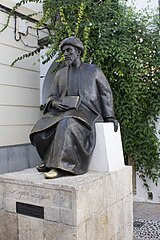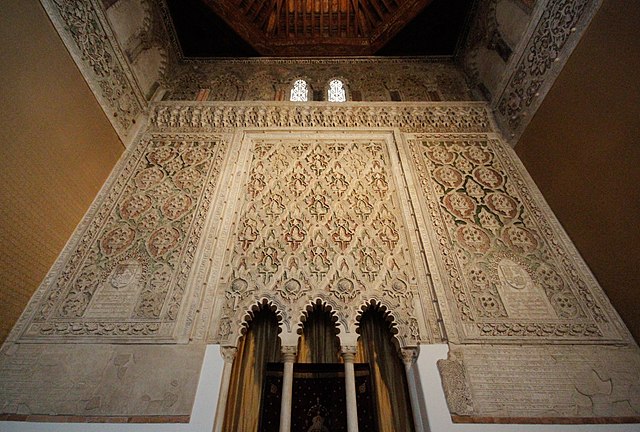The many-centuries-long saga of the Sephardim, the Jews of Sepharad (as they called the Iberian Peninsula) reaches back to Roman Hispania (and there are suggestions there might have been trade links dating back even to Old Testament times). But as elsewhere in Europe, despite building a magnificent heritage here, the road for Spanish Jews has not always been smooth - most infamously their persecution and ultimate mass expulsion in 1492 by rulers Ferdinand and Isabella.
 But Judaism has been back in the news of late for a number of reasons relating to Spain's latest attempts to make amends. On a micro front, for example, a small town in Burgos got international notice last year thanks to a vote on whether to change its name. You see, for centuries, its name was Castrillo Matajudíos – matajudíos charmingly meaning “kill Jews.” Fortunately, the town's five dozen or so residents did vote to restore the original “Motajudíos” (“Jew Hill”) - which though it might still be considered dicey in more politically correct places, here counts as a step forward.
But Judaism has been back in the news of late for a number of reasons relating to Spain's latest attempts to make amends. On a micro front, for example, a small town in Burgos got international notice last year thanks to a vote on whether to change its name. You see, for centuries, its name was Castrillo Matajudíos – matajudíos charmingly meaning “kill Jews.” Fortunately, the town's five dozen or so residents did vote to restore the original “Motajudíos” (“Jew Hill”) - which though it might still be considered dicey in more politically correct places, here counts as a step forward.
On a macro front, however, next month the Spanish Senate is expected to approve the Sephardic Ancestry Bill, offering citizenship to descendants of the expelled (expected to become law by the end of the year). This offer could potentially cover up to a third of the world’s 13 million Jews and could very well eventually be taken up by hundreds of thousands. As it is, ironically despite Israeli prime minister Benjamin Netanyahu's nagging European Jews to emigrate to Israel, the Spanish embassy in Tel Aviv has been flooded by requests by those eager to head the other way (hmmm).
Here's another irony: given the religious and geopolitics of the Middle East today, the golden age of the Sephardic Jews was under the relatively tolerant rule of the Moors – particularly from the 8th through 12th centuries – giving rise to towering historic figures like the philosopher Maimonides (right). They fared rather less well after the Christian Reconquest, until that fateful year they were finally forced to either convert or scram.
But they left behind a rich, exotic architectural and cultural legacy across Spain, especially in the Juderías, the Jewish quarters of cities like Córdoba, Girona, and Toledo. And in recent years great efforts have been made to publicize this legacy and organize access to it with initiatives like Paths of Sepharad.
Several of Spain’s major Hebraic highlights:
Córdoba
The Judería here is truly one of my favourite city old quarters in Spain, and its 14th-century synagogue is one of the country’s three best-preserved of its kind from the Middle Ages. There’s also a Casa de Sepharad, a fascinating cultural center and museum. The International Sephardi Music Festival takes place here in each June.
Girona
This highly appealing city in north Catalonia is home to El Call, the best preserved Judería in Spain (and one of the best in the world), restored in 1980. In addition to an evocative warren of narrow lanes, patios, and archways, the Bonastruc ça Porta Centre includes a fascinating museum of Jewish history and culture.
Seville
The city’s most picturesque quarter, the Barrio de Santa Cruz, was once its Judería, and a number of its churches used to be synagogues. These days, apart from soaking up the picturesque atmosphere amid the winding lanes, whitewashed buildings, and little orange-tree-adorned squares, you can visit the Seville Judería Interpretation Centre.
Toledo
You've heard the expression "Holy Toledo!" One reason is that back in the day, this ancient city looming over the Tagus River was Iberia’s leading centre of Jewry, counting no fewer than ten synagogues and five Talmudic schools. Today, the two that survive (after having been converted to churches) are the 14th-century Sinagoga del Tránsito(above, which includes the Sephardic Museum) and the extremely Moorish-flavored 12th-century Santa María La Blanca (top, thought to be Europe’s oldest extant synagogue).
There are many, many others – the the lovely little medieval city of Besalú in Catalonia; Tudela in Navarre; Andalusia’s Lucena; the Galician town of Ribadavia; and so on and so forth. In fact, it could be said that Spain has one of the world’s more interesting menus of Jewish heritage tourism.
Let me to leave you with a video montage interweaving images of some of these places with medieval Sephardic artwork, set to Quando el Rey Nimrod, a famous song in Ladino, the Sephardic dialect based on 15th-century Spanish with borrowings from languages such as Arabic and Turkish. Shalom…
images | Marrovi, Daniel Villafruela, José Luiz Bernardes Ribeiro


Comments